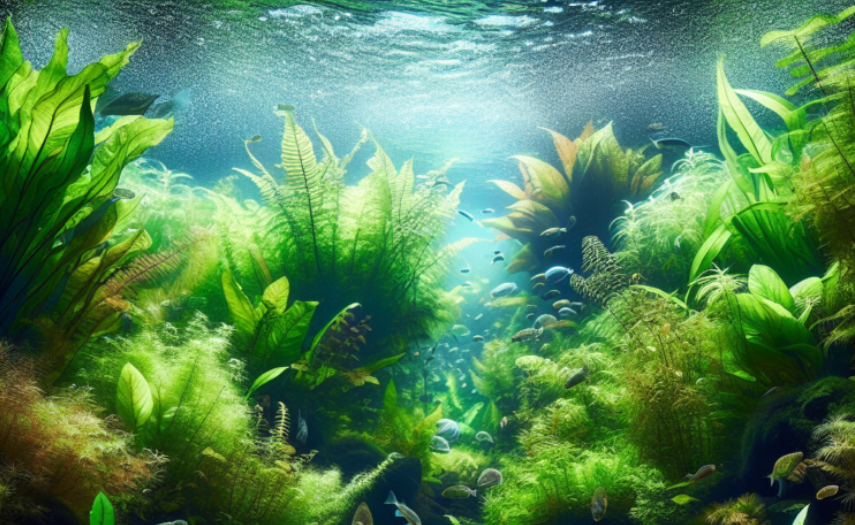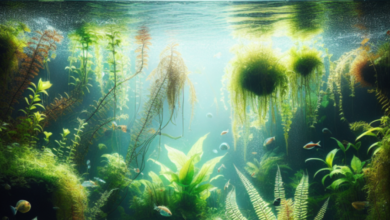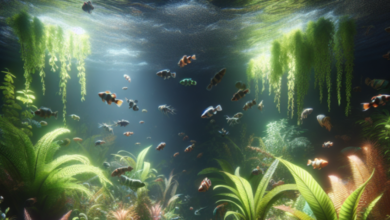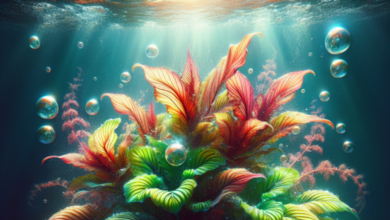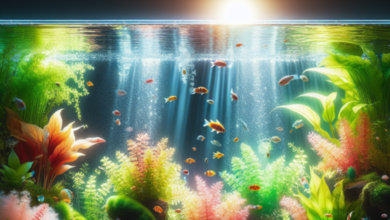Aquascaping is an art form that combines creativity and science to create stunning underwater landscapes. One essential element of a captivating aquascape is the carpeting plants. These low-growing plants spread across the substrate, resembling a lush green carpet. In this comprehensive guide, we will delve into the world of carpeting aquarium plants, exploring their benefits, types, cultivation techniques, and maintenance tips. Whether you are a beginner or an experienced aquarist, this article will equip you with the knowledge to create a vibrant and healthy carpet in your aquarium.
I. Introduction to Carpeting Aquarium Plants
Before we delve into the details, let’s understand what carpeting aquarium plants are and why they are a popular choice among aquascapers.
A. What Are Carpeting Aquarium Plants?
Carpeting plants are low-growing aquatic plants that spread horizontally, forming a dense carpet-like appearance in the aquarium. They play a vital role in aquascaping by adding visual appeal, providing hiding spots for fish and invertebrates, and improving water quality.
B. Benefits of Carpeting Aquarium Plants
Carpeting plants offer numerous benefits to the overall health and aesthetics of your aquarium. Some key advantages include:
1. Enhanced Aesthetics: The lush green carpet created by these plants adds a natural and visually pleasing touch to your aquascape.
2. Fish and Invertebrate Shelter: Carpeting plants provide hiding spots for small fish and invertebrates, reducing stress and creating a more natural habitat.
3. Water Filtration: These plants absorb excess nutrients, preventing algae growth and improving water quality.
4. Oxygenation: Through photosynthesis, carpeting plants release oxygen into the water, ensuring a well-oxygenated environment for your aquatic inhabitants.
Now that we understand the basics, let’s explore different types of carpeting aquarium plants and their unique characteristics.
II. Types of Carpeting Aquarium Plants
Carpeting plants come in various species, each with its own growth patterns, leaf shapes, and care requirements. Here are some popular choices to consider for your aquascape:
A. Dwarf Baby Tears (Hemianthus callitrichoides)
Dwarf Baby Tears, also known as HC Cuba, is a popular carpeting plant due to its vibrant green color and tiny leaf size. It requires high light intensity and a nutrient-rich substrate for optimal growth.
B. Dwarf Hairgrass (Eleocharis parvula)
Dwarf Hairgrass is a versatile carpeting plant that can thrive in a wide range of aquarium conditions. It features thin, grass-like leaves and creates a beautiful carpet effect when planted densely.
C. Monte Carlo (Micranthemum tweediei)
Monte Carlo is a fast-growing carpeting plant with small, round leaves. It adapts well to different lighting conditions and spreads quickly, making it an excellent choice for beginners.
D. Staurogyne Repens
Staurogyne Repens is a hardy carpeting plant that can tolerate a wide range of water parameters. It has vibrant green leaves and forms a dense carpet when given proper care.
E. Glossostigma (Glossostigma elatinoides)
Glossostigma is a popular choice for creating a vibrant green carpet. It requires high light intensity and regular trimming to maintain its carpeting effect.
Now that we have explored different types of carpeting plants, let’s move on to the next section and learn how to cultivate a lush and healthy carpet in your aquarium.
III. Cultivating a Lush and Healthy Carpet
To create a thriving carpet in your aquarium, you need to consider several factors, including substrate choice, lighting, CO2 supplementation, and nutrient dosing. Let’s dive into each aspect in detail:
A. Substrate Choice
Choosing the right substrate is crucial for carpeting plants to establish strong root systems. Here are a few options to consider:
1. Aquasoil: Specialized aquasoils like ADA Aqua Soil or Fluval Plant and Shrimp Stratum provide essential nutrients and maintain stable pH levels, promoting healthy plant growth.
2. Sandy Substrate: Fine-grained sand substrates allow for better root penetration and promote healthy carpet growth.
3. Nutrient-Rich Substrate: If you opt for inert substrates like gravel or sand, consider using root tabs or liquid fertilizers to provide essential nutrients to the plants.
B. Lighting Requirements
Carpeting plants typically require high light intensity to thrive. Investing in quality LED lights or T5 fluorescent lamps with a color temperature between 6500-8000K will provide the necessary spectrum for photosynthesis.
C. CO2 Supplementation
Carbon dioxide (CO2) supplementation is essential for carpeting plants as it promotes faster growth and prevents algae overgrowth. Consider using a CO2 injection system or liquid carbon supplements to maintain optimal CO2 levels.
D. Nutrient Dosing
Regular dosing of essential nutrients like nitrogen, phosphorus, and potassium is crucial for healthy carpet growth. Use liquid fertilizers or dry fertilizers to ensure a balanced nutrient supply.
E. Planting Technique
When planting carpeting plants, ensure proper spacing to allow them to spread and form a dense carpet. Plant them in small clumps or use the dry start method for better root establishment.
IV. Maintenance Tips for a Lush Carpet
Maintaining a lush carpet requires regular care and attention. Here are some tips to keep your carpeting plants healthy:
A. Pruning and Trimming
Regular pruning and trimming are essential to prevent the carpet from becoming too dense and blocking light from reaching the lower layers. Use sharp scissors or tweezers to trim excess growth.
B. Algae Control
Maintain a balance between light, CO2, and nutrient levels to prevent algae overgrowth. Consider reducing lighting duration or adjusting CO2 levels if algae become problematic.
C. Nutrient Monitoring
Regularly test water parameters, including nitrate, phosphate, and potassium levels, to ensure optimal nutrient dosing. Adjust fertilization accordingly to prevent deficiencies or excesses.
D. Proper Water Circulation
Ensure adequate water circulation with the help of a reliable aquarium filter. This will prevent stagnant areas and promote even nutrient distribution throughout the carpet.
V. Conclusion
Creating a lush and healthy carpet of aquarium plants is an exciting endeavor that adds beauty and life to any aquascape. By selecting the right carpeting plant species, providing suitable growing conditions, and offering proper maintenance, you can achieve a stunning underwater landscape that will captivate both you and your aquatic inhabitants.
VI. FAQ Section
Q1: Can carpeting plants survive in low light conditions?
A1: While most carpeting plants require high light intensity, some species like Java Moss or Java Fern can tolerate lower light levels.
Q2: How often should I trim my carpeting plants?
A2: Regular trimming is recommended every 2-4 weeks, depending on the growth rate and desired carpet density.
Q3: Can carpeting plants be kept with goldfish?
A3: Goldfish are notorious for uprooting plants, including carpeting species. It is best to avoid keeping them together.
Q4: Can I use liquid fertilizers instead of root tabs?
A4: Yes, liquid fertilizers can be used as an alternative to root tabs. However, a combination of both can provide better results.
Q5: How long does it take for a carpet to fully develop?
A5: The time required for a carpet to fully develop depends on various factors such as plant species, lighting, and CO2 supplementation. On average, it can take anywhere from a few weeks to several months.
Remember, creating and maintaining a carpet of aquarium plants requires patience and dedication. With the right knowledge and proper care, you can transform your aquarium into a breathtaking underwater oasis. Happy aquascaping!
